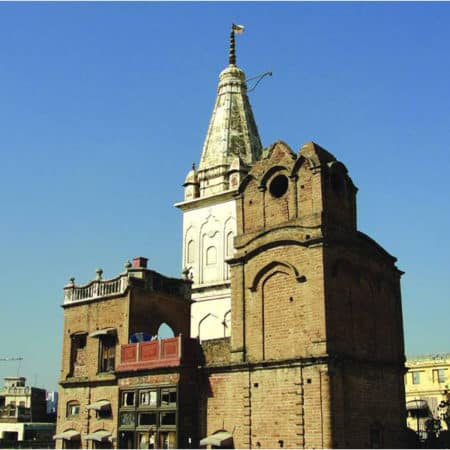
Pakistan Institute of Development Economics
- Home
Our Portals
MenuMenuMenuMenuMenuMenuMenu - ResearchMenuMenuMenuMenuMenuMenuMenu
- Discourse
- The PDR
- Our Researchers
- Academics
- Degree Verification
- Thesis Portal
- Our Portals

Mapping out a Tourism Policy for the Potohar Plateau
Keeping in view the main objective of how to increase international tourist arrivals in the country and revenue generation, I would recommend adopting a micro level policy to identify more potential tourist destinations and the promotion of the same.
This does not require many resources to develop tourist sites but rather to identify and promote them. All that is required to be done is proper destination marketing. Brief site brochures should also be prepared to share on the specified websites and distribute among the tourists on site. The importance and antiquity of the sites should be properly highlighted.
This plan can only be viable if we divide the tourism landscape of Potohar into “tourist clusters” with each cluster having clearly outlined tourist packages. To make the model that I propose more feasible and workable, I recommend starting with a “Potohar Cultural Tourism Promotion Plan”.
Potohar has two most popular tourist sites – Katas Raj and Rohtas. In fact, Potohar is a region in the Punjab which comprises four districts: Rawalpindi, Attock, Chakwal and Attock. Islamabad, the country’s capital, also lies in the Potohar region. Cultural tourism promotion can only be viable and sustainable if the local stakeholders are also to be involved.
I propose that the Potohar region be divided, from a tourism perspective, into the following clusters:
Cluster 1:
This cluster should have a list of potential tourist sites or destinations which lie in and around Islamabad. It should include new tourist destinations in Islamabad which will attract more tourists. Based on my several years’ journeys for my books and research into the cultural landscape of Potohar, I propose to include in this cluster the two Hindu temples located at Golra Sharif and Rawal Dam respectively. The Hindu and Sikh complex of Saidpur has been already promoted as a tourist destination in the capital city, and as such attracts many tourists both national and international. The Sikh gurdwara and Muslim (Akbari mosque) monuments of Kuri town can also be added to this cluster. Moreover, the international tourists who intend to visit Taxila should also be offered in the same tourist package the 16th-century Caravan Serai of Serai Khurbuza of Islamabad. Shah Allah Ditta Caves, Kenthala Baoli (stepped well from the Mughal period), the Palina Mughal period enclosure and Ban Faqiran Buddhist Stupa are on the same tourist trail which will undoubtedly be the most attractive sites for international tourists. Pharwala (6 km north of Gulberg Greens and residencia Housing Scheme) and Rawat monuments ( 3 km from DHA-II) can be included here. The majority of these sites are unknown to the international tourists and these sites are not even promoted enough to receive local tourists.
Cluster 2:
In this cluster can be included the lesser known sites of Kallar Syedan tehsil in the Rawalpindi district which have not been yet tapped as tourist destinations. Buddhist, Sikh, Hindu and Muslim monuments can be included in this cluster. Tope Manikyala, (Buddhist stupa 5 km east of Rawat), Sagri monuments (Hindu temples, Sikh gurdwara, havelis and the historic bazaar), Ghazanabad Baoli (a Mughal period stepped well), Khem Singh Bedi haveli and Krishna temple in Kallar Syedan town, Kanoha Gurdwara (10 km east of Kallar Syedan town), Dhangali monuments of the Gakhars (historic fortress, mosque, tomb, 17th-century Dam on Jhelum River, and an Eidgah of the 18th century). All these newly identified tourist destinations are located on the same route or tourist trail. Potentially, it could be named the “Kallar Syedan –Dhangali tourist trail”.
Cluster 3:
This cluster will have the lesser known havelis, gurdwaras, samadhis and temples of Gujar Khan. The prominent newly identified sites will include, Kauntrila (10 km south of Gujar Khan where there are located an impressive three-storeyed haveli of Bakhshi Ram Singh and 16th-century Mughal period mosque), Gulyana (a village noted for Hindu temples, Muslim, Hindu and Sikh havelis) Karnali (famous for the Samadhi of Baba Mohan Das, located 10 km west of Gulyana), Daultala (small town with Hindu havelis and Sikh Gurdwaras) and Narali (with numerous Hindu and Sikh monuments).
Cluster 4:
This should include the historic monuments in Fateh Jang tehsil in the district of Attock. This tehsil is host to many historic monuments of Sikhs and Hindus notably those located at Qutbal (Hindu temples, a samadhi and a haveli), Fateh Jang (Hindu temples) and Kot Fateh Khan (Sikh samadhis and Muslim mosques and havelis).
Cluster 5:
This will have historic monuments in Hazro town and Attock Khurd. Although the Attock Khurd monuments are popular tourist sites, those in Hazro are not known to most tourists – which include Hindu temples, a Sikh gurdwara and havelis.
Cluster 6:
This should include the old localities of Rawalpindi particularly, Bhabra Bazaar, Lunda Bazaar and Ahata Mitho Khan which are host to a number of Hindu temples, Sikh gurdwaras and havelis noted for intricately carved wooden doors and magnificent jharokas. These are architectural elements which always attract tourists.
***
In each of the clusters, further “tourist trails” can be developed where there are concentrations of more than four sites on the same route. These trails will offer one-day trips to the sites located on the same route.
Security issues have always been a problem especially for international tourists. One-day trips are always preferred globally as it saves time and generates more revenues without security issues and concerns.
Note: This blog was published as an article in The Friday Times weekly newspaper, on November 15, 2019.
Download full PDF


